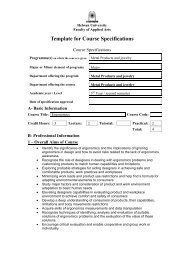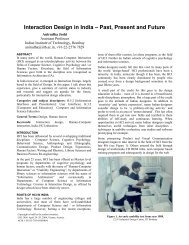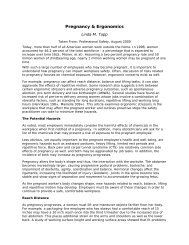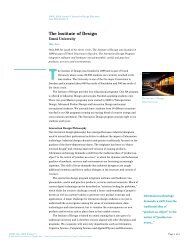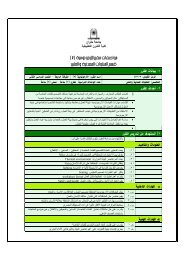Space Requirements for Wheeled Mobility - University at Buffalo ...
Space Requirements for Wheeled Mobility - University at Buffalo ...
Space Requirements for Wheeled Mobility - University at Buffalo ...
- No tags were found...
You also want an ePaper? Increase the reach of your titles
YUMPU automatically turns print PDFs into web optimized ePapers that Google loves.
• Revisions to the n<strong>at</strong>ional surveys are needed to improve the quality and detailof in<strong>for</strong>m<strong>at</strong>ion collected rel<strong>at</strong>ed to the frequency and severity disability andselection of assistive technologies. For example, the last NHIS-D survey didnot distinguish between powered or manual wheeled mobility-aid users.Additionally, n<strong>at</strong>ional surveys do not inquire about why a particular device wasselected and wh<strong>at</strong> altern<strong>at</strong>ives were considered.• The research community and sponsors are strongly encouraged to ensure thein<strong>for</strong>m<strong>at</strong>ion about those with mobility impairments remains a priority and isimproved in future survey ef<strong>for</strong>ts.• A registry of wheeled mobility users could be developed from the surveyrespondents, provided th<strong>at</strong> the appropri<strong>at</strong>e consent could be obtained. Such aregistry could provide a value resource <strong>for</strong> future surveys designed to capturedetailed in<strong>for</strong>m<strong>at</strong>ion about barriers in design and factors th<strong>at</strong> affect theselection of wheeled mobility devices.Human Modeling of <strong>Mobility</strong> Aid Use• Digital human modeling packages such as HADRIAN are powerful design toolsin which a design can be evalu<strong>at</strong>ed against the body sizes and capabilities of“whole” virtual individuals r<strong>at</strong>her than individual dimensions (an importantlimit<strong>at</strong>ion of conventional anthropometric d<strong>at</strong>a use). Based on the structuraland functional anthropometric d<strong>at</strong>a, designers can test virtual tasks in virtualenvironments to determine the percentage of individuals who have the abilityto complete a task in the specific context of the environment.• An autom<strong>at</strong>ed prescriptive system <strong>for</strong> code-checking can be an extremelyvaluable design tool, but requires the designer to more completely define theobjects in CAD models. The Intern<strong>at</strong>ional Alliance of Interoperability (IAI) hasprovided a framework <strong>for</strong> defining sets of objects called Industry Found<strong>at</strong>ionClasses (IFC’s) th<strong>at</strong> support this object-oriented approach.• While digital human models and computer simul<strong>at</strong>ions are useful in design, it isnot clear if use of such tools will be of gre<strong>at</strong> value to the regul<strong>at</strong>ors. Typically,the design questions do not require the level of detail provided by digitalhuman models and simul<strong>at</strong>ions. Further discussion is needed to explore howdigital human modeling and simul<strong>at</strong>ion methods can be used effectively incode development.• Additionally, digital human models are only useful if they are valid<strong>at</strong>ed.Usually only components of the models (e.g., posture prediction <strong>for</strong> specifictasks) are evalu<strong>at</strong>ed, and there is not very much in<strong>for</strong>m<strong>at</strong>ion about the errorsassoci<strong>at</strong>ed with using digital human models in design.Anthropometric Research<strong>Space</strong> <strong>Requirements</strong> <strong>for</strong> <strong>Wheeled</strong> <strong>Mobility</strong> 11



